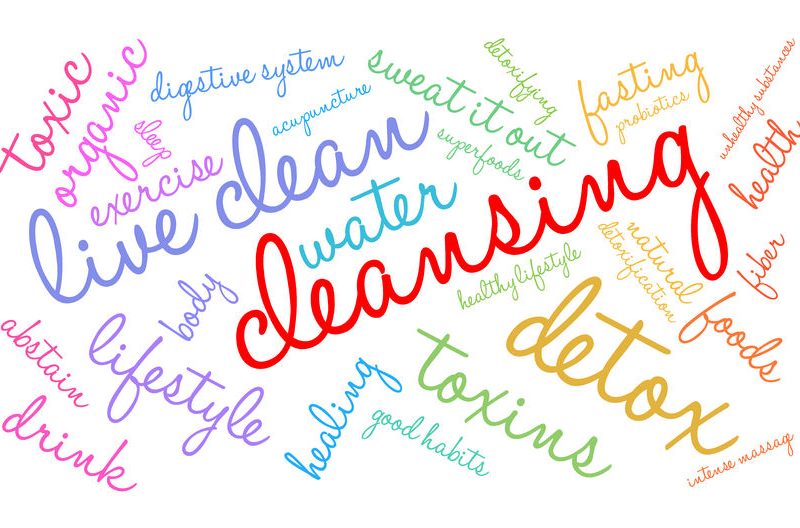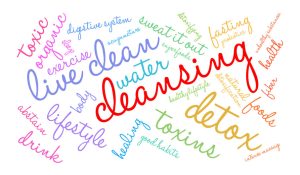
“The best of all medicines is resting and fasting.” – Benjamin Franklin
What if there was a way to achieve better health while doing “nothing”? Perhaps Ben Franklin had it right all those years ago. We all get caught up in “being a verb”, especially in our profession.
Every day we encourage clients to do more: train harder, engage in more cardio, seek out new forms of physical recreation…the list goes on and on. Imagine being able to make positive strides in our wellbeing by actually doing less!

The human body is a brilliantly complex machine, capable of executing billions of processes, most of which we are unaware. It (the human body) can transfer energy, manufacture antibodies, and utilize nutrition to feed its cells. Our bodies also possess unique properties of detoxing and self –preservation when under extreme duress.
Autophagy as a Fasting Motivation
One such property that has recently entered the public eye is the concept of autophagy. This word, of Greek origin, translates literally to “eating of self”. If upon reading, you instantly call up a mental image of life-threatening flesh-eating bacteria, imagine instead a process that is beneficial to our bodies.
Autophagy is classified as an auto-regulatory degrading process, one that strives to preserve the body’s balance of energy, typically in response to stress. “Think of autography as our body’s innate recycling program,” says Colin Champ, M.D., a board-certified Radiation Oncologist and Assistant Professor at the University of Pittsburgh Medical Center. “Autophagy makes us more efficient machines to get rid of faulty parts, stop cancerous growths, and stop metabolic dysfunction like obesity and diabetes.”
When the human body encounters a stressful situation, such as a pathogenic invader, the innate desire to return to homeostasis is activated. The optimal mechanism by which our elaborate machine accomplishes this is by kicking up efforts to eradicate the microbe from the cells as well as clear out toxins caused by the immune system’s response to infection.
When considered in this light, we can clearly see the beneficial side of an infection, the body responding to stress by ridding itself of undesirable cellular debris.
Can stress, therefore, be considered a life-saving element? “It’s our ancestral and evolutionary response to dealing with feast and famine in times of stress,” says Dr. Champ. “Since a lot of these things would kill us, like starvation and exercise, it only makes sense that after millions of years we adapted those mechanisms to make them positive.”
Reach Autophagy with Time-Restricted Feeding (TRF)
Nobody wants to deal with a microbial infection, no matter how positive the autophagy response seems. Scientists began to wonder if the simple stress induced by a lack of nutrition might also elicit a similar response. As it turns out, this is indeed a powerful way to ignite the autography dynamic.
One manner by which the human body has demonstrated proof of this theory is through intermittent fasting, or TRF (time-restricted feeding). There are several variations on this theme that are rapidly gaining mainstream popularity.
Such meal plans run the gamut from a 24-36-hour fast a few days a month to a 12-14-hour fast every day. A slightly less stringent offshoot of these is the 5:2 plan, where meals are clean, healthy and contain a reasonable number of calories for 5 days each week, while on the remaining 2 days calories are substantially reduced, often to 500-600 calories throughout the day.
The 12 hours on/ 12 hours off approach seems to resonate more easily with the majority of the population. An individual may enjoy breakfast at 7:00 am, lunch at noon, and conclude the evening meal by 7:00. Assuming nothing but non-calorie fluids are consumed from then on until bedtime, this individual will awaken and once again eat breakfast at 7:00 am.
The 12-hour “fast” ends up taking place predominantly during the overnight hours. While the thought of not snacking at all during those 12 hours seems daunting at the onset, the many benefits to intermittent fasting outweigh the discomfort that initially accompanies such a time shift in nutrient intake. Thus, we are able to think of this entire protocol of time spent not eating as “simply doing nothing” and yet achieving great results in terms of health.
Benefits of Time-Restricted Feeding
The human body continuously engages in a self- detoxification process 24 hours a day. This requires a considerable amount of energy…but so does the process of digestion. During a 12-hour fast, digestion is not a primary focus, enabling the majority of energy to be directed at eliminating toxins and healing. Allowing the body ample time for cellular repair, the intermittent fast becomes highly beneficial for optimizing detoxification.
The human body stores usable energy in the form of glycogen, usually a supply sufficient enough to provide 6-8 hours of expendable energy. Once glycogen is depleted, the next powerhouse to be tapped is the energy stored in fat cells.
While eating small meals throughout the day will keep glycogen stores replenished, convincing the body to prioritize fat stores for energy becomes much more challenging. The process of TRF, with its inherent 12-hour fast, extends the time between meals, thereby forcing the body to tap into fat reserves for usable energy.
Can you exercise while fasting?
When we exercise, energy expenditure increases. While this is inherently a positive dynamic, it nonetheless places stress on our cells, and components get worn out faster. “Determining the level of exercise needed to stimulate autophagy (is a) hard question to answer at the moment,” says Daniel Klionsky, Ph.D., a cellular biologist at the University of Michigan.
If done properly, performing exercise during a fast can be highly beneficial.
As previously mentioned, in the absence of glycogen stores during a fast, the body will be forced to utilize fat stores as an alternate energy source. However, workouts may need a bit of alteration, ideally limiting the duration of the exercise.
“When glycogen is in short supply, your body also reverts to breaking down protein – your muscles’ building blocks – for fuel,” said Kelly Pritchett, Ph.D., R.D., Assistant Professor in Nutrition and Exercise Science at Central Washington University and a board-certified Sports Dietetics Specialist. Exercising too long on an empty stomach may cause the body to begin burning protein as the fat reserves become depleted. Once this cascade has been set into motion, the body is at risk of losing hard-earned lean muscle mass.
In the absence of nutrition-based energy, such as during a prolonged fast, the body initially succumbs to the weakness brought about by lowered levels of glycogen and blood sugar. Once the habit of regular intermittent fasting becomes a comfortable lifestyle, our energy systems do adapt. However, experts in this field caution that initially overdoing the time and/or intensity of workouts may have detrimental effects. Sufficient rest periods therefore become even more of a necessity.
Two Different Approaches to Consumption
Results have been highly positive in response to the 12 hours on/12 hours off protocol, once the body adjusts to a period of hunger at the onset. This timing protocol is in sharp contrast to the typical “bodybuilder meal plan”, that of consuming 6 small protein-rich meals throughout the day to optimize lean muscle mass growth. If each delivers health improvements, which method is the most desirable?
To answer this question, I began observing an expert in this area, one who exemplifies the beauty of nature’s circadian feeding cycles: our granddaughter. When she was born and throughout her infancy, Madelyn would eat on demand. Some days it was every 2 hours, and some difficult evenings included “cluster feeding”, during which periods she would nurse on and off at 45-minute intervals.
Clearly, Madelyn was not eating in response to social cues or the goal of adding muscle mass. Rather, her body was responding to its innate hunger cues: satisfying a physiological need was all that mattered in her nascent world. At this stage of life, such an inborn feeding schedule more closely resembles that of the competitive bodybuilder.
As she approached her 1st birthday and continues now that she has reached the 15-month mark, Madelyn eats breakfast at 7:30 am, lunch from 11:30-noon, enjoys a snack after her nap at 3:00 pm, and has dinner with her parents around 6:30 pm. Nothing is consumed between the end of dinner and her 8:00 pm bedtime.
Mother Nature instilled within our little one the innate ability to slowly and seamlessly shift from one method of feeding to another. Now responding to a new circadian rhythm, Madelyn’s body ends up being on an overnight fast of approximately 13 hours, having consumed all of her calories between an 11- hour time frame.
Is this an example of evolution, the body’s attempt at self-cleansing? It is a question worth pondering.
Take-Away Message
Just as in program designs for clients, there is not a single method of consuming and timing nutrition that suits every individual. Often clients ask us to recommend “the best meal plan” for them to follow in order to achieve the desired results. We need to remember that each of us is unique in every way, including how our bodies metabolize, digest and burn food for fuel.
Intermittent fasting is simply one tool in the toolbox, a choice to present to clients in much the same way that we can either promote protein/vitamin/mineral supplementation or a diet of real, whole foods. The overriding importance is an overall healthy approach to living.
We cannot expect a single aspect to be the panacea for every health challenge we may face during our lifetimes. However, by slowly experimenting with a variety of approaches, we can assist our clients in ultimately paving the way for an optimal nutrition/workout plan to meet each one’s unique goals.
Have you had experience with intermittent fasting versus a typical bodybuilding nutrition method?
References
https://www.w24.co.za/Wellness/Diet/the-ultimate-guide-to-intermittent-fasting-20170320
https://www.washingtonpost.com/national/health-science/timing-your-meals-may-help-with-weight-loss-thats-what-it-seems-to-do-in-mice/2018/03/23/14672fc0-f718-11e7-a9e3-ab18ce41436a_story.html?noredirect=on&utm_term=.844dad069908
https://health.usnews.com/health-news/health-wellness/articles/2015/06/16/intermittent-fasting-vs-6-small-meals-a-day-whats-best-for-weight-loss
https://www.webmd.com/diet/obesity/features/6_meals_a_day#1
https://www.bbc.com/news/health-44005092
https://www.ncbi.nlm.nih.gov/pubmed/19398886
https://greatist.com/health/wtf-intermittent-fasting
https://www.ncbi.nlm.nih.gov/pmc/articles/PMC2990190/
https://greatist.com/live/autophagy-fasting-exercise
https://www.ideafit.com/fitness-library/is-it-time-to-eat-yet






